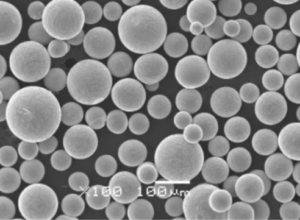멀티 재료 분사(MMJ) 개요
매혹적인 세계로 오신 것을 환영합니다. 멀티 재료 분사(MMJ)! 이 글을 읽고 계신다면 3D 프린팅 및 적층 제조 분야에서 MMJ가 뛰어난 기술인 이유가 궁금하실 것입니다. 프린터가 있는데 잉크 대신 다양한 재료의 작은 물방울을 분사하여 복잡한 구조물을 층층이 쌓아 올린다고 상상해 보세요. 멋지지 않나요? MMJ는 타의 추종을 불허하는 다목적성과 정밀도를 제공하여 항공우주부터 의료에 이르기까지 다양한 산업 분야의 판도를 바꾸고 있습니다.
그렇다면 멀티 재료 제팅이란 정확히 무엇일까요? 기본적으로 여러 재료를 동시에 증착하는 3D 프린팅의 한 유형입니다. 이 기술을 사용하면 단일 제작 프로세스에서 금속, 폴리머, 세라믹을 결합하여 다양한 속성을 가진 복잡한 부품을 만들 수 있습니다. 마치 여러 가지 재료 팔레트로 그림을 그리는 것과 같으며, 각각의 재료는 최종 걸작에 독특한 느낌을 더합니다.
멀티 재료 분사(MMJ) 소개
기술적인 핵심을 살펴보기 전에 먼저 배경을 살펴보겠습니다. 다중 재료 제팅은 단순한 미래형 기술이 아니라 이미 제품을 설계하고 제조하는 방식을 혁신하고 있습니다. 단일 공정에서 여러 재료를 조합할 수 있는 MMJ를 사용하면 복잡한 형상과 맞춤형 특성을 가진 부품을 제작할 수 있습니다. 즉, 유연성과 강성을 모두 갖춘 부품이나 전도성 및 절연성 소재를 결합한 부품을 하나의 원활한 공정으로 제작할 수 있습니다.
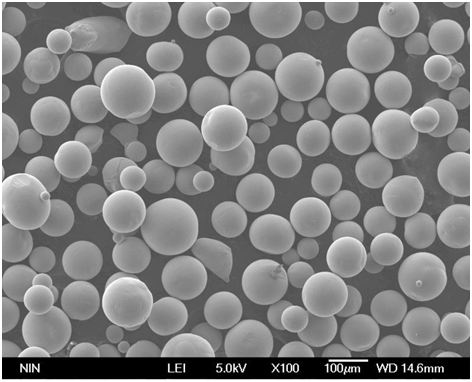
멀티 재료 분사(MMJ)의 구성
MMJ에 대해 이야기할 때 사용되는 재료의 구성이 중요합니다. 다음은 주요 재료에 대한 분석입니다:
| 재료 유형 | 구성 | 속성 |
|---|---|---|
| 금속 | 스테인리스 스틸, 티타늄, 알루미늄 합금 | 높은 강도, 전도성, 열 안정성 |
| 폴리머 | ABS, PLA, 광중합체 | 유연성, 생체 적합성, 처리 용이성 |
| 세라믹 | 알루미나, 지르코니아 | 경도, 내열성, 전기 절연성 |
| 합성물 | 금속-폴리머 혼합물, 세라믹-폴리머 혼합물 | 향상된 기계적 특성, 맞춤형 전도성 및 유연성 |
각 소재는 테이블에 고유한 특성을 제공합니다. 금속은 견고함과 내구성을 제공하고, 폴리머는 유연성과 사용 편의성을 제공하며, 세라믹은 고온 환경에 적합합니다.
의 특성 멀티 재료 분사(MMJ)
MMJ의 특성을 이해하면 그 다재다능함과 잠재력을 이해하는 데 도움이 됩니다. 다음은 몇 가지 주요 기능입니다:
- 정밀도와 정확성: MMJ는 16미크론의 미세한 레이어 두께로 고해상도 인쇄를 구현할 수 있습니다.
- 소재의 다양성: 단일 공정에서 다양한 재료를 결합할 수 있는 기능은 다기능 부품을 제작할 수 있는 무한한 가능성을 열어줍니다.
- 표면 마감: MMJ 부품은 일반적으로 표면 마감이 매끄러워 후처리의 필요성이 줄어듭니다.
- 복잡한 지오메트리: 기존 제조 방식으로는 불가능했던 복잡한 디자인도 쉽게 구현할 수 있습니다.
다중 재료 분사(MMJ)의 응용 분야
MMJ는 다양한 산업 분야에서 활용되고 있습니다. 가장 눈에 띄는 몇 가지 사례를 살펴보겠습니다:
| 산업 | 애플리케이션 | 예제 |
|---|---|---|
| 헬스케어 | 보철, 치과 임플란트, 의료 기기 | 맞춤형 보철물, 생체 적합성 임플란트 |
| 항공우주 | 경량 구성 요소, 복잡한 어셈블리 | 제트 엔진 부품, 경량 구조 부품 |
| 자동차 | 프로토타이핑, 기능성 부품 | 맞춤형 대시보드, 인체공학적 시트 |
| 소비재 | 맞춤형 제품, 디테일이 뛰어난 모델 | 맞춤형 주얼리, 정교한 미니어처 |
| 전자 제품 | 인쇄 회로 기판, 웨어러블 기기 | 유연한 PCB, 스마트워치 |
가볍고 튼튼한 항공우주 부품을 제작하거나 매우 섬세하고 개인화된 소비재를 제작하는 등 각 산업은 MMJ의 고유한 기능을 통해 혜택을 누리고 있습니다.

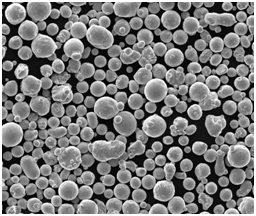

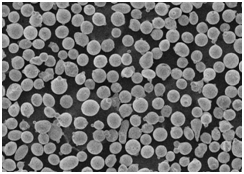
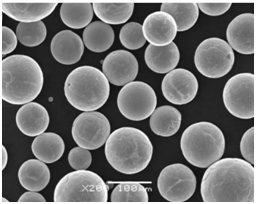
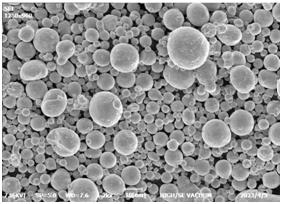
다중 재료 분사(MMJ)의 사양 및 표준
MMJ의 경우 품질과 일관성을 보장하기 위해서는 사양과 표준을 준수하는 것이 중요합니다. 다음은 몇 가지 주요 사양과 표준을 살펴봅니다:
| 매개변수 | 사양 | 세부 정보 |
|---|---|---|
| 레이어 두께 | 16-32 미크론 | 부품의 해상도 및 표면 마감을 결정합니다 |
| 볼륨 구축 | 최대 1000 x 800 x 500mm | 인쇄 가능한 개체의 최대 크기 |
| 재료 허용 오차 | ±0.1% | 재료 증착의 정밀성 |
| 인쇄 속도 | 시간당 10-30mm | 재료 및 부품 복잡성에 따라 달라집니다 |
| 표준 | ISO/ASTM 52900, ASTM F2792 | 적층 제조 공정에 대한 표준 가이드라인 |
공급업체 및 가격 세부 정보 멀티 재료 분사(MMJ)
MMJ 기술을 활용하고자 하는 사람이라면 적합한 공급업체를 찾고 관련 비용을 이해하는 것이 중요합니다. 다음은 몇 가지 주요 공급업체와 가격 세부 정보가 나와 있는 표입니다:
| 공급업체 | 사용 가능한 자료 | 가격 책정 | 연락처 정보 |
|---|---|---|---|
| 스트라타시스 | 폴리머, 금속, 복합재 | 50/kg부터 시작 | www.stratasys.com |
| 3D Systems | 폴리머, 금속 | 70/kg부터 시작 | www.3dsystems.com |
| HP | 폴리머 | 60/kg부터 시작 | www.hp.com |
| 구체화 | 폴리머, 세라믹, 금속 | 사용자 지정 가격 | www.materialise.com |
| EOS | 금속, 폴리머 | 100/kg부터 시작 | www.eos.info |
가격은 재료 유형, 수량 및 공급업체에 따라 달라질 수 있습니다. 결정을 내리기 전에 항상 견적을 요청하고 옵션을 비교하는 것이 좋습니다.
멀티 머티리얼 제팅(MMJ)의 장단점 비교
모든 기술에는 장단점이 있습니다. MMJ의 장단점을 비교해 보겠습니다:
| 측면 | 장점 | 단점 |
|---|---|---|
| 소재의 다양성 | 여러 재료로 동시에 인쇄 가능 | 재료 호환성에 따른 제한 |
| 정밀도 | 높은 해상도 및 정확도 | 단일 재료 인쇄에 비해 느린 인쇄 속도 |
| 복잡성 | 복잡한 형상 및 다기능 부품 생산 가능 | 고급 소프트웨어 및 전문 지식 필요 |
| 표면 마감 | 매끄러운 마감으로 후처리 필요성 감소 | 애플리케이션에 따라 약간의 마무리 작업이 필요할 수 있습니다 |
| 비용 | 복잡한 소량 부품 생산에 비용 효율적 | 초기 설정 및 재료 비용이 높을 수 있습니다 |
금속 파우더 모델에 대한 자세한 설명
이제 MMJ에 사용되는 특정 금속 파우더 모델과 그 고유한 특성 및 응용 분야에 대해 자세히 알아보겠습니다:
- 스테인리스 스틸 316L: 내식성과 강도로 잘 알려진 316L은 의료용 임플란트 및 식품 가공 장비에 이상적입니다.
- 티타늄 Ti6Al4V: 가볍고 튼튼한 이 합금은 항공우주 및 생물의학 분야에서 일반적으로 사용됩니다.
- 인코넬 718: 고온 특성이 뛰어난 니켈-크롬 합금으로 터빈 블레이드와 로켓 엔진에 적합합니다.
- 알루미늄 AlSi10Mg: 이 합금은 가벼운 무게와 우수한 기계적 특성을 결합하여 자동차 및 항공 우주 부품에 적합합니다.
- 코발트 크롬(CoCr): 내마모성과 생체 적합성으로 잘 알려진 CoCr은 치과 및 정형외과용 임플란트에 사용됩니다.
- 마레이징 스틸(MS1): 이 고강도 강철은 툴링 및 고응력 부품에 사용됩니다.
- 니켈 합금 625: 부식과 고온에 강한 이 합금은 화학 처리 및 해양 분야에 사용됩니다.
- 구리(Cu): 열 및 전기 전도성이 뛰어난 구리는 전자제품과 열교환기에 사용됩니다.
- 공구강 H13: 경도와 열 피로에 대한 내성으로 잘 알려진 H13은 다이캐스팅 및 성형에 사용됩니다.
- 금(Au): 금은 미적 매력 외에도 전도성과 생체 적합성 때문에 전자제품과 의료 기기에서 사용됩니다.
각 금속 분말 모델에는 고유한 용도와 장점이 있으므로 MMJ는 다양한 산업 분야에서 다용도로 활용할 수 있는 기술입니다.

자주 묻는 질문
| 질문 | 답변 |
|---|---|
| 멀티 머티리얼 제팅(MMJ)이란 무엇인가요? | MMJ는 여러 재료를 동시에 적층하여 복잡한 부품을 제작하는 3D 프린팅 기술입니다. |
| MMJ에 사용할 수 있는 소재는 무엇인가요? | 금속, 폴리머, 세라믹 및 복합 재료는 모두 MMJ에 사용할 수 있습니다. |
| MMJ의 장점은 무엇인가요? | 높은 정밀도, 다양한 소재, 매끄러운 표면 마감, 복잡한 형상을 만들 수 있습니다. |
| MMJ의 한계는 무엇인가요? | 높은 초기 설정 비용, 느린 인쇄 속도, 소재 호환성 문제. |
| MMJ의 혜택을 받는 산업은 무엇인가요? | 의료, 항공우주, 자동차, 소비재, 전자제품. |
| MMJ는 다른 3D 프린팅 방법과 어떻게 다른가요? | MMJ는 소재의 다양성과 정밀도가 뛰어나지만 더 복잡하고 비용이 많이 들 수 있습니다. |
| MMJ의 일반적인 빌드 볼륨은 얼마인가요? | 기계에 따라 최대 1000 x 800 x 500mm까지 가능합니다. |
| MMJ에 대한 표준 가이드라인이 있나요? | 예, ISO/ASTM 52900 및 ASTM F2792는 적층 제조 공정에 대한 가이드라인을 제공합니다. |
| MMJ 자료의 공급업체는 어떻게 선택하나요? | 자재 가용성, 가격 및 공급업체 평판을 비교하세요. 최적의 거래를 위해 견적을 요청하세요. |
| MMJ의 일반적인 활용 분야는 무엇인가요? | 맞춤형 보철물, 경량 항공우주 부품, 기능성 자동차 부품 등을 제작할 수 있습니다. |

